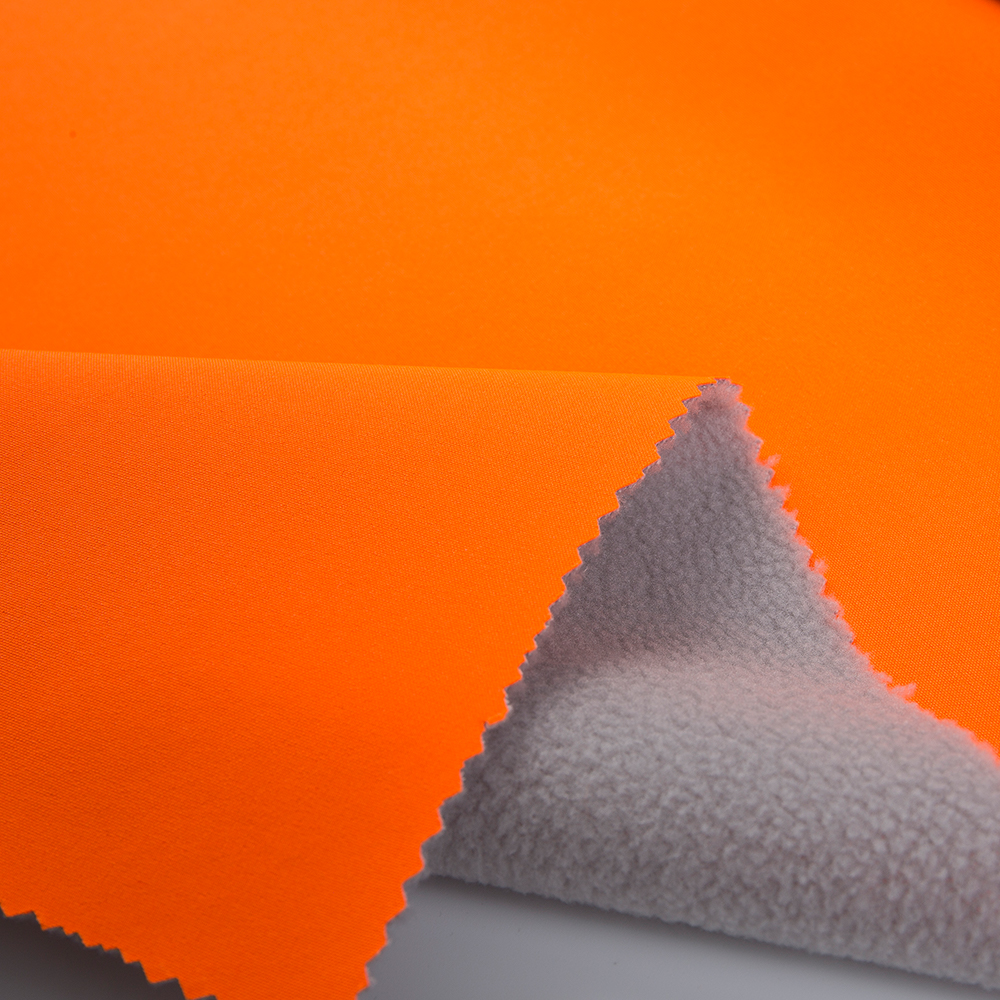The multi-layer construction of softshell fabrics plays a crucial role in enhancing their performance across a range of weather conditions, such as wind, rain, and snow. Typically, softshell fabrics consist of several layers, each with a specific function designed to maximize comfort, protection, and breathability. Here's a breakdown of how the multi-layer construction enhances performance in various weather conditions:
1. Outer Layer (Durable Water Repellent - DWR Coating)
The outer layer of a softshell fabric is typically treated with a Durable Water Repellent (DWR) coating. This layer plays a key role in protecting the fabric from rain and snow:
Water Resistance: The DWR coating helps repel water, causing rain or snow to bead up and roll off the fabric instead of soaking in. This keeps the fabric dry for longer, preventing it from becoming heavy and waterlogged.
Wind Resistance: The outer layer often has a wind-resistant feature, blocking wind from penetrating through the fabric. This is especially important in cold, windy conditions where wind chill can rapidly lower body temperature. The tight weave of the fabric helps deflect wind and maintain warmth without sacrificing breathability.
2. Middle Layer (Breathable Membrane or Insulating Layer)
Many softshell fabrics incorporate a breathable membrane or an insulating middle layer, which improves moisture regulation and thermal comfort:
Breathability: A key feature of softshells is their ability to allow moisture vapor (sweat) to escape while preventing external water from entering. The membrane in the middle layer allows for breathability, which is essential during high-intensity activities like hiking, skiing, or climbing. It ensures that perspiration doesn’t accumulate inside the fabric, helping the wearer stay dry and comfortable even during physical exertion.
Insulation: Depending on the design, this middle layer may also provide light insulation, making softshells suitable for moderate cold conditions. Unlike heavy jackets or down coats, the insulation in softshells provides warmth without being bulky. This allows for greater mobility and comfort, particularly in active outdoor settings.
3. Inner Layer (Fleece or Lining)
The inner layer of softshell fabrics often consists of a fleece lining or similar soft material, providing comfort and warmth:
Thermal Regulation: Fleece or other insulating materials trap air close to the body, helping to maintain warmth in colder conditions. The fleece also acts as a wicking layer, drawing moisture away from the skin to the outer layers where it can evaporate, thus keeping the wearer dry.
Softness and Comfort: The inner fleece adds an extra level of comfort against the skin, especially important during long periods of wear. It also contributes to a lightweight warmth, making softshells versatile for a range of weather conditions, from mild to moderately cold environments.
4. Flexibility and Stretch
A key advantage of softshell fabrics is their inherent stretchability, which is often achieved through the use of elastic fibers (e.g., spandex or elastane) woven into the fabric:
Freedom of Movement: The multi-layer construction of softshell fabrics, combined with their stretch properties, allows for enhanced mobility and flexibility during activities like climbing, skiing, or cycling. This makes softshells highly suited for active outdoor sports where a range of motion is important, even in less-than-ideal weather.
Fit and Comfort: The stretchy material adapts to the shape of the body, ensuring a close, comfortable fit while still allowing for ample freedom of movement. This reduces the likelihood of the garment becoming restrictive, even during strenuous physical activity.

5. Protection Against Snow and Rain
Softshells are designed to offer protection from snow and light rain:
Snow Resistance: The tightly woven outer layer of a softshell prevents snowflakes from settling on the fabric, keeping it dry and preventing moisture from accumulating inside. While softshells are not as waterproof as hardshells, they still offer a significant degree of protection in light snow conditions.
Rain Resistance: For light rain, the DWR-treated outer layer of the fabric ensures that water beads up and runs off. However, softshells are not fully waterproof and may become saturated in heavy rain. In such cases, they are typically worn in conjunction with other layers, like a waterproof shell, for added protection.
6. Windproof Properties
Windproofing is one of the main functions of the outer layer in softshell fabric:
Wind Protection: The outer fabric layer is designed to block wind, which is essential in preventing the body from losing heat quickly in cold, windy environments. The windproof property of the fabric works by trapping warm air close to the body, reducing heat loss and helping to maintain comfort during physical activities.
Wind Resistance in High Winds: In extreme wind conditions, the softshell fabric may not be as effective as a hardshell jacket, but for most outdoor activities in moderate wind, the windproof nature of the fabric provides adequate protection and helps to maintain comfort and warmth.
7. Layering and Versatility
One of the most significant advantages of softshell fabrics is their layering versatility:
Layering System: Softshells can be easily incorporated into a layering system, allowing them to be worn over base layers and under an outer waterproof shell, if necessary. This flexibility makes softshells highly adaptable, as they can be used in various weather conditions by adjusting the layers to suit the level of protection needed.
Adaptable for Varying Conditions: The softshell's multi-layered construction allows it to be used in a variety of outdoor activities where conditions change rapidly, such as skiing, mountaineering, or hiking in mixed weather. The breathable properties help prevent overheating during strenuous activity, while the water resistance and windproof layers provide protection in more adverse conditions.











